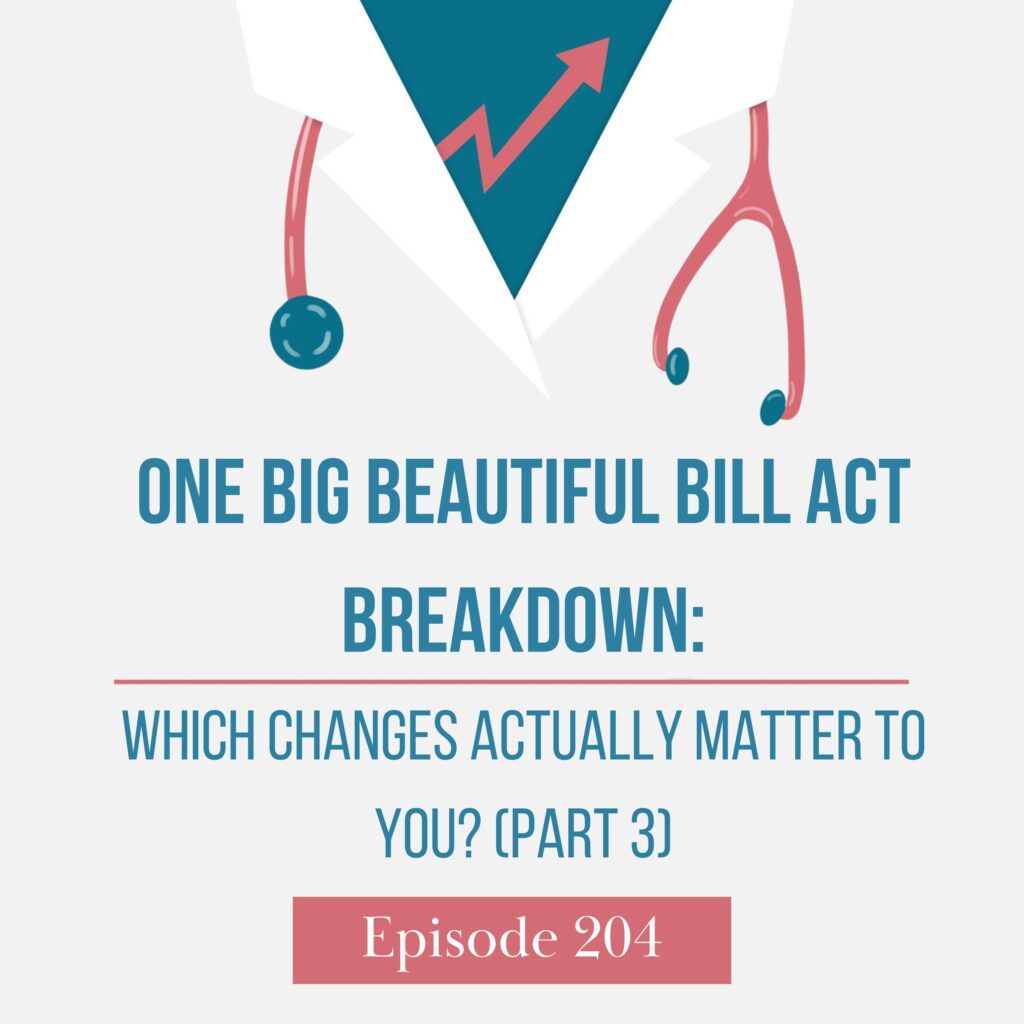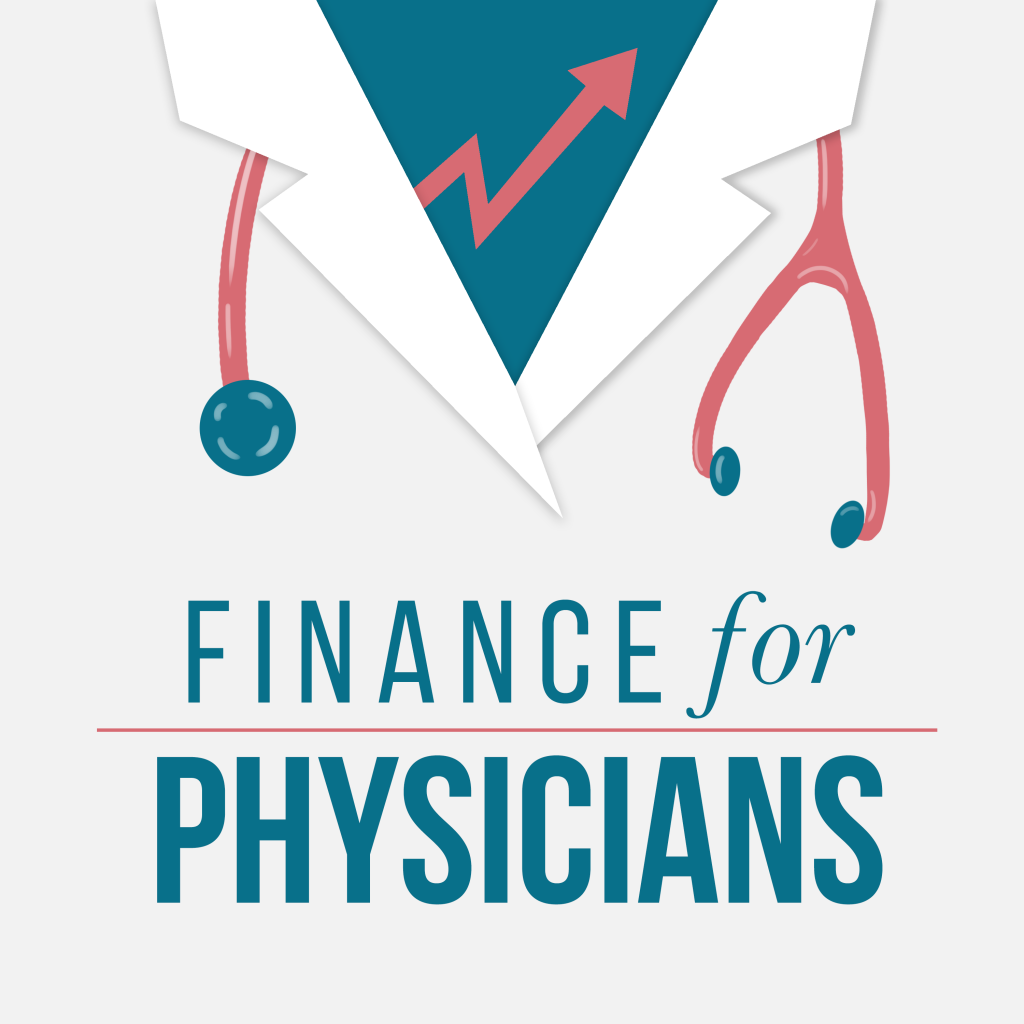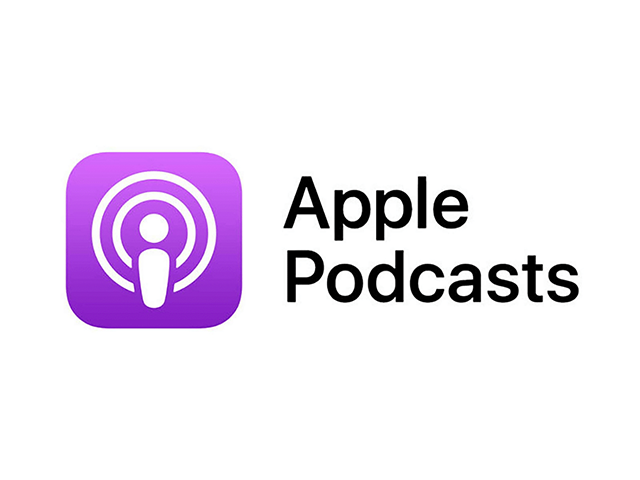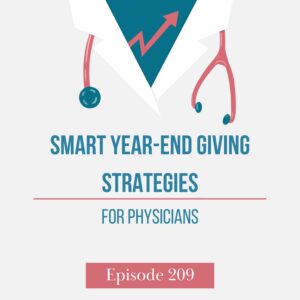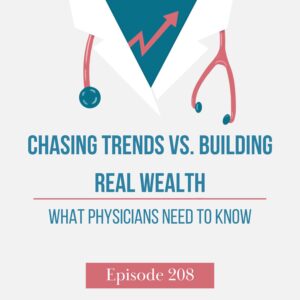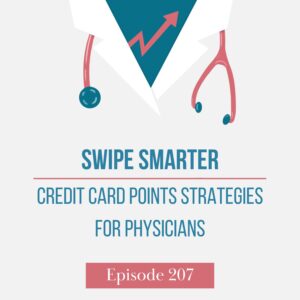The student loan landscape just got a major overhaul, and we’re breaking down everything physicians need to know about the massive changes coming from the One Big Beautiful Bill Act.
Listen in as Daniel and Jeff Wenger walk through the new repayment plan structure, what’s happening to SAVE borrowers, and the critical decisions you need to make right now, especially if you’re currently in SAVE forbearance.
You’ll hear the good news (PSLF still exists!), the challenging news (most changes favor the government), and the strategic moves that could save you thousands depending on your situation.
—————————————————————————————————————————
Transform your financial outlook today! Access our exclusive free resources for physicians and conquer financial stress. Access here. P.S. We value your opinion! Share your thoughts and insights with us. Your feedback helps us improve and tailor our content to your needs. Click here to give us a piece of your mind.
Links
- One Big Beautiful Bill Act Breakdown: Which Changes Actually Matter to You? (Part 2)
- One Big Beautiful Bill Act Breakdown: Which Changes Actually Matter to You? (Part 1)
- Connect with Jeff Wenger
- Connect with me on my LinkedIn
- Contact Finance for Physicians
- Finance for Physicians
- To schedule a call with one of our awesome planners, book HERE.
Full Episode Transcript:
Jeff Wenger: Pay As You Earn, especially if you have loans. I’ve worked with a number of people in this situation where we’re on track for loan forgiveness in about 2027 or 2028. At that point, maybe you do stick on Pay As You Earn for a couple of years, see if you can just ride that out and tell a loan forgiveness and you get through it before the sunset of that plan.
If it did sunset, you transition into IBR anyway. Your payments will go up. Just right at the end of that, but may as well take the lower payments that still count towards PSLF if you are on that route.
Welcome to Finance for Physicians, the show where we help physicians like you use money as a tool to live a great life. I’m your host, Daniel Wrenne, and I’ve spent the last decade advising physicians on their personal finances with the mission to help them understand that taking control of their finances now means creating a future where they can practice medicine where, when, and how long they want to.
Daniel Wrenne: Jeff, what’s going on?
Jeff Wenger: Oh, hey, Daniel. It’s good to see you again. I’m having a moment today where I realized my body’s saying, “Hey, welcome to 40.” I turned to grab a glass of water in the kitchen today, and then my back hurts.
Daniel Wrenne: Oh no.
Jeff Wenger: What are you gonna do?
Daniel Wrenne: That kind of thing will sneak up on you, I guess.
Jeff Wenger: Somebody said I need to work on my flexibility. That’s probably true.
Daniel Wrenne: Do you stretch every morning?
Jeff Wenger: No, but I should apparently.
Daniel Wrenne: Yeah. Maybe get some stretching going.
Jeff Wenger: But speaking of flexibility, it’s time to be flexible with student loans again, isn’t it?
Daniel Wrenne: Yeah. I guess the government is hoping everybody has lots of flexibility and grace with the student loan changes. We’ve talked about the One Big Beautiful Bill Act.
I’m still getting the hang of saying all that and all the changes. We talked about all the tax law changes first, but there’s also a ton of big student loan changes, massive student loan changes, so they’re mostly negatives. Any positives? Maybe a few positives? We’ll try to put a positive spin at least on something.
Jeff Wenger: It probably depends on your policy viewpoint, if it’s positive or not. But for borrowers with existing loans, I’d say mostly negative.
Daniel Wrenne: Yeah.
Jeff Wenger: Or in some cases it’s even keeled. No real change. Just some changes that amount to no change, which is par for the course with the government program, right?
Daniel Wrenne: Yeah. I think the one little piece of good news before we jump in is that it’s a little more concrete than it’s been. There’s been a very extended period of time where nobody knows what’s happening. It’s like we’re in this COVID forbearance period where everything was up in the air and nothing was happening, so planning was nearly impossible.
So that part is a, there’s a little bit more concrete game playing around, and it was passed through Congress, so that’s more firm than an executive order.
Jeff Wenger: Yeah, certainly a lot more clarity at this point, particularly with the court case and things being paused and all the injunctions, all that stuff.
Some of that still needs to be sorted out. But going forward, here’s the template for what to expect, and it’s all from this One Big Beautiful Bill Act.
Daniel Wrenne: There you go. Yeah. So we’re gonna hit the high points that we think are most valuable to you guys listening. There’s a ton of stuff in it, so there’s no way we’ll hit everything, but we’re gonna do our best to hit the high points.
Jeff Wenger: Actually, before we dive into what’s in the bill, it might be good to say what’s not in the bill. What wasn’t impacted. There have been some major concerns I’ve been hearing about in my student loan conversations with doctors, and a big one was PSLF still exists.
Yeah. PSLF’s still a program.
It’s still an option. And it exists. It’s still an option for those that work those 120 months in a nonprofit institution and to have the payments to go along with it. That’s not in the bill because it didn’t change.
Daniel Wrenne: And it still could be really appealing even if you’re say like in medical school or entertaining medical school. Still could be appealing.
Jeff Wenger: Yeah. That’s another change that was discussed and not implemented was medical residency fellowship. It was put out there that those periods of time would not qualify, and that would be for future borrowers. But that did not make the final cut. And so that’s a big deal because those are the lowest earning years that you have that are gonna be qualifying for a loan forgiveness program.
So to not be able to count those would make it very difficult for PSLF to be profitable for you, a good option. Whereas this still keeps that an option. It might still make sense in many cases.
Daniel Wrenne: And 25-year forgiveness made the cut, but not 20-year forgiveness.
Jeff Wenger: So that part just depends on the plan that you’re on.
So it’s the new or IBR persists. So IBR is still going to be a plan, and we’ll talk about those payment plan changes here with what was in the bill, but it did not change the forgiveness aspect of income-based repayment, which has that time-based aspect. For new borrowers versus old borrowers, it’s a different time period, but it’s 20 or 25 years.
That’s the good news is what wasn’t in there. PSLF still around and residency still counts. That’s great for our audience. Good recipe.
Daniel Wrenne: Those are definitely good pluses. Okay, let’s get into the repayment plan changes. You wanna kick us off with that?
Jeff Wenger: So that’s the big one, that repayment plans are changing again.
It’s gonna be simplified where they’re taking away all current income-driven repayment plans, and those will all be consolidated into the income-based repayment plan. And that comes in two flavors still because there’s those for old income-based repayment borrowers and new ones.
Basically, if you borrowed a loan before 2014, you’re old. After 2014, you’re new, and during 2014, half of you are old and half of you are new.
Daniel Wrenne: Can you explain the difference between those for? Does that even matter for anybody before or after 2014?
Jeff Wenger: Yeah. Before 2014, your payment is based on 15% of your income. After 2014, your payment is based on 10% of your income, likely a lower payment if you’re new. What’s important to us is that there’s a new repayment plan being created, the Repayment Assistance Plan, and that will be available basically to everyone, no earlier than July 2026.
Daniel Wrenne: But now there’s IBR and RAP only, right?
Jeff Wenger: There’ll be IBR and RAP. Current borrowers can get into IBR, so if you’re on Pay As You Earn. If you’re on SAVE, if you’re on ICR, I mean there’s a niche case where people should be on ICR, I suppose, but we’re probably not talking to hardly anybody with that one. But Pay As You Earn or SAVE right now, that should be transitioning, or you would be moving to the income-based repayment plan at some point between July 2026 and July 2028.
You can stay on your plan for a little while and eventually would be transitioned to IBR. For borrowers after July 1st, 2026, it appears that the repayment assistant plan, the RAP plan, will be the only plan that you would be eligible for. That’s a important one to notice or to note, is that going forward, that might be the only plan to calculate on for anybody taking out new loans.
Daniel Wrenne: So it’s looking like IBR is getting acts too?
Jeff Wenger: New applications. Yeah, it still exists. But it would be…
Daniel Wrenne: So there’s a window—if you want to get into IBR, there’s a window of time?
Jeff Wenger: Yeah. So the window would really be, it would be just stay on your income-driven repayment plan. And if you do, you should transition into IBR at some point in the next couple of years.
But if you are borrowing new loans, starting a year from now—ooh, my back just winced—it wasn’t the student loan pain, it was the back pain. But yeah, if you are borrowing a year from now, new loans, you need to be aware that that could limit your payment options further to just that Repayment Assistance Program.
Daniel Wrenne: So if I’m an existing borrower, I can stay in IBR?
Jeff Wenger: Yes. So if you’re an existing borrower, you can stay in IBR. For many on other plans, particularly the SAVE forbearance right now, if you’re in that situation, you should be taking a look at if it makes sense to switch over to the IBR plan or do something else with those loans, just to assess your situation. Right now, there’s not a whole lot of benefit to staying in the SAVE forbearance anyway.
Daniel Wrenne: Right. That’s another big factor. Interest starts back on forbearance and everything. Interest was waived during COVID forbearance, which technically was continuing until now. We’re recording this August 4th, so as of now, interest has just restarted a few days ago.
Jeff Wenger: Well, for those that were in COVID forbearance and then jumped on the SAVE plan, basically, yeah, there hasn’t been any interest for you for five years, or if you’ve been enrolled in a plan since 2020. For others, there would’ve been some interest there if they weren’t on that SAVE forbearance. But yeah, as of August 1st, interest is starting up again on the SAVE plan in that forbearance.
Daniel Wrenne: Are SAVE payments counting towards PSLF?
Jeff Wenger: Right now, that forbearance that they’re in does not count. There’s the potential. You could use the PSLF buyback program to get them to count in the future, but that’s a hot mess in and of itself.
Daniel Wrenne: It’s all a hot mess, Jeff.
Jeff Wenger: But anyway, since those payments aren’t counting right now, and they’d have to go back and recalculate income anyway.
You may as well, if you want those payments to count for anything, just get on a payment plan that’s gonna count now and make the payment so you don’t have to go and pay them back later. And depend on the Department of Education or its successor for student loans to manage a buyback calculation.
Daniel Wrenne: If I’m in SAVE and I’m been in SAVE forbearance forever, I guess that would be the scenario where I was not going for PSLF or maybe just totally unsure ’cause I could do the buyback. Like maybe I would go for PSLF. Why would somebody, if I am in SAVE forbearance today, why would I—assuming I was making a good decision—be in SAVE forbearance at this point in time?
Jeff Wenger: I would say at this point in time, a case where that would make sense is if the cash flow is just the big issue, and you could really use $1,500 a month to pay off credit cards before getting ready to tackle your student loans again in a couple months.
Daniel Wrenne: But for everybody else, you probably should be seriously thinking about getting out of SAVE, right? Like, if you’re going for PSLF probably makes a lot of sense to get out of SAVE pretty quickly. Versus if you’re not going for PSLF, probably makes sense to get out of SAVE pretty quickly too, unless you have one of those exceptions we’re talking about or even some others we haven’t thought of.
But I think the path is the big question. If I’m in SAVE, what’s my next path? And it seems like to me, or from my experience, most people are in SAVE or were in SAVE up till the last few months, but a lot of people were in the SAVE plan.
Jeff Wenger: Yeah, a large number in the SAVE plan. It made a lot of sense. It was a really beneficial plan to borrowers.
Daniel Wrenne: Yeah, let’s go with the scenario where I’m in SAVE and I’m probably not going for PSLF.
Jeff Wenger: Yeah. So you’re not going for PSLF. If you’re thinking you’re gonna be paying these loans off,
Daniel Wrenne: I am very confident I’m gonna have to pay the entire balance off. I just started seeing interest rack up.
Jeff Wenger: Yeah. So if you are ready to make that jump and say, “Hey, I’m gonna pay these off,” refinancing is one option. Interest rates on that right now are probably in the 5% range, and a lot of these loans are at 6.8%. And if you can get that 2% difference, it’s a lot of savings.
It’s a big savings. If you aren’t ready to abandon the federal loan system, there are a few reasons you might do that. And there’s some protections still being in the federal system where you know you do have access to income-based payments and if your situation changes, you could possibly get loan forgiveness
with the IBR plan. You could still get into a different payment plan like income-based repayment, and you’re making payments, and the interest isn’t just accumulating; you’re paying it down and making progress towards some sort of loan reduction or forgiveness in the future.
AD BREAK
Daniel Wrenne: Let’s take a quick break to talk about our firm, Wrenne Financial Planning.
The goal of our podcast is to empower you to make better financial decisions, but sometimes the best financial decision you can make is to work with someone who understands your financial goals and has the expertise to keep you on track to reach them. That’s where Wrenne Financial Planning comes in. We are a full-service financial planning firm that works with over 400 physicians and their families across the country.
We charge a transparent monthly flat fee for our services and offer virtual meetings you can take from anywhere. Best of all, you’ll get to work with a team that specializes in working with physician families. So whether you’re starting out and wondering how you’ll balance your student loan payments and saving for a home, or you are established physician trying to figure out how to pay for your kids’ college and how much you need to save to reach financial freedom, we can help.
I’ll put a link in the show notes to schedule a no-obligation meeting with one of our certified financial planners. Wrenne Financial Planning, LLC is a registered investment advisor. For more information about our firm, please visit wrennefinancial.com. That’s W-R-E-N-N-E financial.com.
AD BREAK END
Daniel Wrenne: Okay, so most of the time, it seems like in general, the refinance route is looking a lot more appealing for the category of people that are now getting the big interest accruals happening. If, on the other hand, I was on SAVE and I was intending to go for PSLF, that’s completely different situation.
Jeff Wenger: Yeah, and that’s where that comes into play now. You probably want to explore at least moving on to a different payment plan. And the reason being that, number one, those payments you would like to have them counted now and in the books rather than trying to buy back payments later—
Daniel Wrenne: Forbearance
Jeff Wenger: —or recalculate and buy them back later. Even if you are doing that, the SAVE forbearance has lasted so long now that if you were buying back less than a year worth of payments, the calculation should be easy. It still takes the processing group a long time to do this, but it should just be the lower of repayment before or after you entered forbearance.
But if you’re getting beyond a year of forbearance, then it’s gonna take tax documents, and they’re gonna calculate the payment on your current income anyway. So if you’re gonna do that, why not stay, keep you in control of the process, get the income submitted sooner so the payments are going on and their accounting? And you don’t have to depend on the program.
Daniel Wrenne: That was an Executive Order.
Jeff Wenger: There hasn’t been discussion of that program ending. There’s a reason. There’s not a reason to persists either.
Daniel Wrenne: I would say that if people start utilizing it, it’ll start catching more attention. I bet it’s flying under the radar right now. Honestly, I don’t know the buyback program hasn’t come up much that I’m aware of. If it’s me, there’s no chance I’m counting on the buyback program. That’s my opinion. There was zero chance I would count on the buyback program even existing. I would much more likely want to go ahead and see the payments calculated and get it out of my account.
Jeff Wenger: Yes, and there have been, so the American Federation of Teachers, I believe at a lawsuit against the Department of Education, they’ve been reporting on numbers for applications for PSLF being processed as well as the buyback program. The positive part of the buyback program is that some of those requests are being processed somewhere between 2000 and 3000 a month.
Daniel Wrenne: 2000 and 3000 payments?
Jeff Wenger: Of those buyback requests.
Daniel Wrenne: Like borrowers, thousand borrowers get about…?
Jeff Wenger: About 3000 borrowers are getting those repayment plans processed.
Jeff Wenger: There’s a growing backlog though, where there’s about 65,000 request in the queue. Hopefully that pace picks up, but.
I wouldn’t say the buyback program is gone or tier. I wouldn’t want to depend on it if I don’t have to.
Daniel Wrenne: So what do you do?
Jeff Wenger: So just get into repayment now so that those payments are counted.
Daniel Wrenne: You move outta SAVE?
Jeff Wenger: Yeah. So if you move outta SAVE, do an application on—
Daniel Wrenne: You can’t certify income within SAVE?
Jeff Wenger: No ’cause there’s no payment calculation for it right now.
Daniel Wrenne: So you would recertify your income, or can you get an IBR?
Jeff Wenger: So if you are looking at doing it between now and July of 2026, you’re gonna have the options, depending on the date of the Pay As You Earn plan or income-based repayment plans.
Daniel Wrenne: Pay As You Earn? What!?
Jeff Wenger: Yes. I know we just said it’s going away, but it’s still an option to enter into for a while. Yeah, so for right now, PAYE is still available to enroll in and is likely. So the sunset data on that is July of 2028. Yeah. But I need to be around until then.
Daniel Wrenne: If you worked with us, we were pretty, a little bit, more proactive, strategic with these sorts of things.
And so typically the people we were working with, that would have benefited from PAYE were already in PAYE? And so therefore, that would’ve not been a situation that would come up? And the people that were in REPAYE for a reason, and they were all the people that switched over to SAVE?
REPAYE basically became the SAVE plan, but the game has changed totally now, so PAYE might be a little bit more appealing when you know SAVE doesn’t exist at all.
Jeff Wenger: Okay, so we said it’s sunset, but for the older borrowers that don’t get the new IBR plan, so they’d have to pay 15% on IBR instead of 10%.
Pay As You Earn, especially if you have loans. I’ve worked with a number of people in this situation where we’re on track for loan forgiveness in about 2027 or 2028. At that point, maybe you do stick on pay as you weren’t for a couple of years. See if you can just ride that out and tell loan forgiveness, and you get through it before the sunset of that plan.
If it did sunset, you transition into IBR anyway. Your payments will go up just right at the end of that, but may as well take the lower payments that still count towards PSLF if you are on that route.
Daniel Wrenne: So PAYE sunsets into IBR?
Jeff Wenger: Yeah. So between July of 2026 and 2028, that’s when that transition would take place.
Daniel Wrenne: And then after then you can’t actually get into IBR?
Jeff Wenger: Right. So at that point, all the other plans, either that you’ve transitioned into IBR or you’re on the Repayment Assistance Plan.
Daniel Wrenne: After then is when it’s driving.
Jeff Wenger: Yes. And then for anybody that borrow—
Daniel Wrenne: It’s gonna be a mess. Until then RAP. That’s when it was getting simpler, and then we started talking, and it’s not simpler, so it’s getting simpler, but this whole transition period is gonna be a mess until, I guess, it will be simpler when we hit 2028 when there’s only RAP.
Jeff Wenger: Yes, RAP and IBR. The two payment plans left, eventually just RAP. Until another congress does a reconciliation bill and creates their own new plan.
Daniel Wrenne: Is that your prediction?
Jeff Wenger: You heard it here first. Play that in four years. I don’t know about four years. Depends on results.
Daniel Wrenne: I say peck less likely for congress to do it than executive orders.
Jeff Wenger: Right. The template for how to introduce a new payment plan is now in front of us: do a reconciliation bill and you can adjust a lot of things. So who knows what happens in the future? But for now, that is the plan. That’s some clarity there. Just a real quick, pro-con comparison, IBR versus that RAP plan.
For new borrowers, they both take 10% of your income, but IBR has this discretionary income chunk that it takes away before counting that 10%. The Repayment Assistance Plan really doesn’t.
Daniel Wrenne: It gives you more like less than 10% of your total income.
Jeff Wenger: Yes. And so in general, it’s gonna be favorable to stick on the IBR plan versus the Repayment Assistance Plan in general.
Daniel Wrenne: But that’s—after 2028, it doesn’t matter ’cause there’s just RAP.
Jeff Wenger: A few things about the RAP plan. You can still divide up your income by filing separate on the RAP plan. That’s still an option and a decision point when you’re strategizing about your student loans. For those of you that are married, if you’re filing a joint return, your repayment plan takes into consideration every source of income in the household.
If you file separate, it’s limited to just your income. If you live in a community property state, it gets really crazy, and you got some options there too. Separate is just one person’s income versus joint makes you use both.
10% of two incomes is usually bigger than 10% of one, but anyway, so that’s the big thing.
Oh, Repayment Assistance Plan does have loan forgiveness. It just takes 30 years. But if you’ve been making payments on that for 30 years, the balance would be forgiven.
Daniel Wrenne: That’s the non-PSLF forgiveness. That’s just the make payments, and they’re like, “We’re tired of taking your payments because we’re just gonna forgive it.”
Jeff Wenger: Have we exhausted these payment plans?
Daniel Wrenne: Maybe we could wrap up with a few strategies that are more common. If I’m talking to the general audience, if you’re zero to five years away from forgiveness and you’re gonna think of all this. And you have PAYE or SAVE or whatever, that’s really difficult to say, like rule of thumb wise, it’s just gotten pretty complicated.
So I would say talk to your planner for more custom-specific advice on that. Or if you work with somebody, talk to them, or this is a good time to hire a student loan planner. There’s people that do that kind of standalone service. Jeff sometimes does it himself. If there was ever a time where it would be good to get some advice on your student loans, it’s right now because it’s such a mess for the in-betweener period, and the stakes are pretty high, especially, you have pretty high balances.
That’s a big impactful decision. I would not throw in the towel in PSLF. There’s a lot of people I’ve heard talking about SAVE especially, they’re like super frustrated that, say, you’re at a academic hospital and you’re like, four years out from PSLF and you’ve been in SAVE for a really long time. And you’ve just found out that it’s going away and that your forbearance payments don’t count. Those people you would expect are probably very frustrated and some of them I would better even thinking, “I’m giving up on PSLF. I’m gonna refinance, I’m gonna go private, suit a loan, just pay it off as fast as I can.”
I would not do that. I would take a minute and look at the numbers, or hire somebody to help you look at the numbers. Maybe that is the ultimate conclusion, probably not, but at least you can do it a little more logically.
With all that being said, you want to throw out some scenarios that would be good for people to think about, especially earlier?
Jeff Wenger: If you’re considering medical school or borrowing for medical school. If it’s after normal financial aid decisions for the 2026, 2027 school year. Make your plans based on that RAP plan, at least for now.
Anybody borrowing under that condition. That’s what we expect that you’ll be on the Repayment Assistance Program and it’ll be 10% of your income. Factor that into your resident budget. For those that are already in residency, maybe early residency, or you have several years left in that training in those training years, usually keep those options open.
It still makes sense in most cases to be on an income-driven repayment plan, whether that’s income-based repayment, which is likely where you want to be at this point to going for a while, but keeping the options open where you’re making progress towards PSLF if, as an attending, you go to a qualifying position.
It’s still a good deal to have loans forgiven later and pay less on them for 4, 5, 6 years. If you have 4 years of residency at this point, you’re almost halfway there on the payments anyway. If you’re on a plan like income-based repayment where they get capped, you can’t pay any more than you would over 10 years.
It’s like you got a 10-year playoff plan, but you got a discount on the first four years. The PSLF was gonna make sense to you before this. It probably still does. One other case, a perk or a benefit of all these changes you mentioned. There’s no payment cap on that RAP plan. There’s also no payment cap on the SAVE plan, which is where a lot of people are, and they were expecting if I want my payments to count, I can’t get on any other plan ’cause my income’s too high, and I won’t even qualify to get on income-based repayment or Pay As You Earn.
One perk of requiring everybody on a repayment plan move to IBR is that they had to remove the partial financial hardship requirement where basically your income has to be low enough relative to your loan balance to get on a payment plan. They’ve removed that, but the payment cap so that you wouldn’t pay more than you would in 10 years on the plan is still in place.
This could be an opportunity for higher income. People that are farther along to get into that payment plan and have a capped payment where it wouldn’t be maybe even as high as you’re paying now if you’re on—if you’re on the SAVE plan, you’re not paying now, but it would be scheduled.
Daniel Wrenne: This could be a really good perk because the fact that they let you into IBR is a big deal because that payment cap.
Jeff Wenger: Yeah, and if you’re looking at the cap, it almost doesn’t matter if you’re old or new, you’re probably old if you’re in there at this point. If you’re worried about it, who knows? That’s a guess.
Daniel Wrenne: Other big common scenarios or general scenarios for people?
Jeff Wenger: No, I think you might have said it best, is just don’t panic. Do an assessment. Figure out what the right path is forward for you. If it was already gonna be PSLF, it probably still is. If you were gonna pay off your loans, this might be that point in time where now the incentive not to refinance is limited. It’s going away with the zero interest going away. So maybe that spurs you onto action, but if your plan was already to pay ’em off, it might be time to take that next step in that plan and refinance ‘em.
And if you’re not sure, if you’re a resident, that has a few years before you get that attending position and you’re not quite sure where it’ll be, flexibility is likely to be the right route. Stay on an income-driven repayment plan. Keep your options open and make that decision when the future’s clear.
Daniel Wrenne: Anything else you can think of we didn’t hit on?
Jeff Wenger: Other changes that we didn’t hit on. These won’t necessarily apply to the current borrowers, but borrowing limits are going down or being capped. So new professional students, so our new med students would be limited to $200,000 of loans, which would be a change from the unlimited borrowing that’s currently out there. Again, doesn’t impact our current borrowers that we’re talking to, but in the future that could have an impact.
Daniel Wrenne: Yeah. So that will probably just increase. Jeff and I were talking about this before, but that’ll probably just increase the volume of private loans happening. I would agree with Jeff’s prediction about that. You’re gonna not be able to borrow as much through the federal government, but there’s tons of private companies in America that are chomping at the bit to offer more loans to medical students.
Jeff Wenger: I’ll give one other impact. This is dealing with Parent PLUS Loans. It’s a very small group of people that you just might apply to right now, but for those that have Parent PLUS loans, it’s gonna be a little bit easier to get onto the income-based repayment, but they do have to be consolidated by July of 2026. Otherwise, they’ll be outta luck.
Daniel Wrenne: Okay. Well, I want everyone to email their questions, especially if you want us to dig into areas. We resisted the temptation to get into the weeds. We could talk about scenarios or dig into specifics as needed. Make sure to let us know what you guys are thinking. And hopefully, we hit the main high points for today.
Jeff Wenger: The high points and then a few others.
Daniel Wrenne: And a few others. Well, thanks, Jeff.
Jeff Wenger: I love talking student loans with you and we’ll have to do it again soon.
Daniel Wrenne: Sounds good.
No guests or clients appearing on the podcast received any form of compensation for their appearance and obtained no other benefit from us. It should not be assumed that every client has had the same experience.



